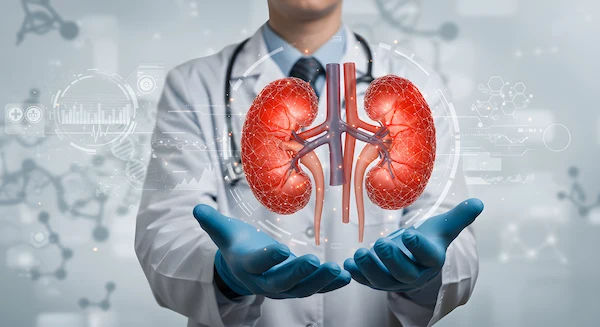Gomukhasana (Cow Face Pose) Benefits and How to Practice It
Discover Gomukhasana benefits with a step-by-step guide, safe modifications, and tips to boost flexibility. Learn how to practice this yoga pose safely.

%20Benefits%20and%20How%20to%20Practice%20It.webp?tr=q-80,f-webp,w-350,dpr-2,c-at_max 700w)
Introduction
If tight shoulders or hips make daily movement uncomfortable, Gomukhasana (Cow Face Pose) can be a helpful addition to your routine. This classic yoga pose combines a deep shoulder stretch with a hip opener, making it a practical way to work on flexibility and posture. While research on specific poses is limited, yoga as a whole has been shown to support flexibility, mobility, and stress management. Below, you’ll find what Gomukhasana benefits may look like, how to practice the pose safely, and simple modifications to make it accessible.
What is Gomukhasana (Cow Face Pose)?
Gomukhasana is a seated yoga pose that stacks the knees and binds the hands behind the back. The “cow face” name comes from the shape formed by the crossed legs and arms. The pose primarily targets:
• Shoulders and chest (front of shoulders, rotator cuff, triceps)
• Hips and outer thighs (glutes, piriformis, IT band area)
• Upper back and posture muscles
The combination of shoulder and hip work is why many people include it in mobility and flexibility routines.
What are gomukhasana benefits?
It’s helpful to separate general evidence-based benefits of yoga from the more targeted effects often associated with specific postures.
Evidence-based benefits of yoga (overall)
• Flexibility and range of motion: Regular yoga practice is associated with improved flexibility and joint mobility.
• Strength and balance: Many yoga sequences build functional strength and balance, important for healthy aging and fall prevention.
• Stress and mental well-being: Yoga, which integrates mindful breathing, is linked to reduced perceived stress and improved mood and sleep quality.
• These findings come from reputable sources that review the overall practice of yoga and physical activity.
Targeted benefits people seek from this pose
• Shoulder mobility: The “cow face arms” position stretches the shoulders, chest, and triceps, which may ease stiffness from desk work.
• Hip and outer thigh release: Stacking the knees opens the glutes and outer hips, areas that tighten from prolonged sitting.
• Posture awareness: Lengthening the spine while opening shoulders can reinforce upright posture habits.
• Mindful breathing: Holding the pose with steady breathing may help relax the nervous system and reduce muscle guarding.
Important note: Because most studies examine yoga as a whole—not individual poses—treat these gomukhasana benefits as potential, not guaranteed, and adjust the pose to your body.
Consult Top Specialists
How to practice this yoga pose safely?: Step-by-step
Warm-up (2–5 minutes)
Warming up helps your joints and soft tissues move comfortably.
• Gentle shoulder circles and neck rolls
• Cat–Cow (spinal mobilization)
• Thread the Needle (shoulder opener)
• Figure-four stretch or reclined pigeon (hip opener)
• Easy chest opener with a strap or towel
Step-by-step instructions
Side A (example: right arm up, left arm down)
1) Set up your seat
• Sit on the floor or on a folded blanket or yoga block to lift your hips. Extend both legs forward.
2) Stack your knees
• Bend your knees. Slide your left foot under your right knee toward the outside of your right hip.
• Cross your right knee over your left, bringing your right foot toward the outside of your left hip. Ideally, your knees stack. It’s okay if they do not; comfort and alignment come first.
• Keep both sit bones grounded as much as possible. If one hip lifts, sit higher on a block or blanket.
3) Position your arms
• Raise your right arm overhead. Bend your right elbow and let your right hand drop behind your upper back.
• Sweep your left arm behind you, palm facing outward, and bend the elbow to reach up the spine. If your hands don’t meet, hold a strap or towel with both hands.
4) Align and breathe
• Inhale to lengthen the spine and gently draw the lower ribs in.
• Keep your head neutral (no jutting chin). Relax your jaw and shoulders away from your ears.
• Feel a stretch in the shoulders and hips. Sensation should be strong but not sharp or painful.
5) Hold
• Breathe slowly for 30–60 seconds (5–10 calm breaths).
6) Switch sides
• Release gently, uncross the legs, shake them out, and repeat with the opposite leg on top and opposite arm position.
Breathing and hold time
• Aim for smooth inhales and exhales through the nose.
• Start with 30 seconds per side. With practice, increase to 60–90 seconds.
• Repeat 1–2 rounds per side, 3–5 days per week, as part of a balanced routine.
Modifications and props for flexibility
If hips or shoulders feel tight, try these options. These still count toward practice and progress.
• Sit higher: Elevate your hips on a block or firm cushion to reduce knee and hip strain.
• Half Gomukhasana (legs): Keep the bottom leg straight and only cross the top leg over, or sit cross-legged and focus on the arms.
• Strap for the shoulders: Hold a strap, belt, or towel between hands. Walk your hands closer together over time.
• Arms-only version: Stand tall or sit in a chair and do only the shoulder bind, keeping legs comfortable.
• Side bend variation: In arms-only, add a gentle side bend to intensify or fine-tune the stretch. Keep the neck long.
• Wall assistance: Place the lower hand on a wall for gentle traction and to avoid overreaching.
Safety tips and when to avoid?
Gomukhasana is generally gentle, but certain conditions call for caution. If you’re unsure, ask a healthcare professional or a qualified yoga teacher for guidance.
• Knee issues: Avoid forcing the knee stack. If you feel knee pain or pinching, switch to half Gomukhasana or legs-crossed; keep the shin bones comfortable and aligned.
• Shoulder injuries: If you have rotator cuff problems, impingement, recent surgery, or shoulder instability, use a strap, avoid binding, or do other gentle shoulder openers first.
• Hip or low back pain: Sit higher and keep the spine long. Skip forward folds if they aggravate symptoms.
• Nerve symptoms: Tingling, numbness, or sharp pain means you should ease out immediately.
• Pregnancy: Deep hip compression and binding may be uncomfortable. Choose arms-only variations or positions recommended by your prenatal provider.
• General guideline: Stretch to the point of mild-to-moderate tension, not pain. Back off if breath becomes strained.
Common mistakes to avoid
• Forcing the knee stack: Comfort matters more than symmetry. Use props and gentler leg positions.
• Pulling aggressively on the hands: Shoulder structures are delicate. Use a strap and focus on gradual progress.
• Rounding or overarching the spine: Aim for a tall, neutral spine; avoid flaring the ribs forward.
• Holding the breath: Smooth breathing helps the body release tension safely.
• Letting the neck strain: Keep the chin neutral and the back of the neck long.
Tips to progress over time
• Micro-adjust hand position on the strap: Move hands 1–2 cm closer every few sessions as comfort allows.
• Increase time gradually: Add 5–10 seconds per side every week up to 90 seconds.
• Balance both sides: If one shoulder is tighter, spend an extra gentle round on that side without forcing it.
• Combine with complementary moves: Chest openers, thoracic rotations, and glute stretches can support progress and comfort in this pose.
A simple weekly plan
Use this short, consistent routine to build flexibility without overdoing it.
3–5 days per week, 10–15 minutes total
1) Warm-up (3–5 minutes)
• Cat–Cow x 8–10 rounds
• Thread the Needle, 3–5 breaths per side
• Figure-four (reclined or seated), 30–45 seconds per side
2) Gomukhasana practice (6–8 minutes)
• Full pose or modified: 2 rounds per side, 30–60 seconds each
• Arms-only with strap if needed, 30–45 seconds per side
3) Cooldown (1–2 minutes)
• Gentle neck release and shoulder rolls
• A few slow breaths lying on your back
How does Gomukhasana fit into a healthy lifestyle?
• Complement to activity guidelines: Major health organizations encourage regular physical activity for overall health. While yoga is not a replacement for aerobic or strength training, it can be a valuable piece of your weekly routine to support flexibility, mobility, and stress management.
• Mind-body connection: Pairing breath with movement may help you notice tension earlier in the day and adjust your posture or movement patterns before discomfort builds.
Consult Top Specialists
Consult Top Specialists

Dr. Pepsy Jose
Panchakarma Practitioner
14 Years • BAMS, MD Ayurveda (Panchakarma)
Bengaluru
AYURRHYTHM HOLISTIC CLINIC AND PANCHAKARMA THERAPY, Bengaluru

Dr. Anjan Das
Ayurveda Practitioner
8 Years • Ayurvedacharya ( B.A.M.S )
Dumdum
Vedhive Ayurveda Clinic, Dumdum

Dr. Shiv Prakash Singh
Ayurveda Practitioner
19 Years • BAMS
Kolkata
Vedhive Ayurveda College Street, Kolkata

Dr. Rik Sadhukhan
Ayurveda Practitioner
8 Years • BAMS
Kolkata
Vedhive Ayurveda, Ballygunge, Kolkata
Consult Top Specialists

Dr. Pepsy Jose
Panchakarma Practitioner
14 Years • BAMS, MD Ayurveda (Panchakarma)
Bengaluru
AYURRHYTHM HOLISTIC CLINIC AND PANCHAKARMA THERAPY, Bengaluru

Dr. Anjan Das
Ayurveda Practitioner
8 Years • Ayurvedacharya ( B.A.M.S )
Dumdum
Vedhive Ayurveda Clinic, Dumdum

Dr. Shiv Prakash Singh
Ayurveda Practitioner
19 Years • BAMS
Kolkata
Vedhive Ayurveda College Street, Kolkata

Dr. Rik Sadhukhan
Ayurveda Practitioner
8 Years • BAMS
Kolkata
Vedhive Ayurveda, Ballygunge, Kolkata
More articles from General Medical Consultation
Frequently Asked Questions
1) What are the main gomukhasana benefits?
Potential benefits include improved shoulder and hip flexibility, better posture awareness, and relaxation through mindful breathing. As with most yoga research, benefits are best supported for yoga as a whole rather than for this single pose.
2) I can’t clasp my hands behind my back. What should I do?
Use a strap, belt, or towel between your hands. Keep your chest lifted and shoulders down. Over time, bring your hands closer together, but never force the bind.
3) How long should I hold the pose, and how often?
Start with 30 seconds per side and build to 60–90 seconds as comfortable. Practice 3–5 days per week, including a short warm-up and cooldown.
4) Is this yoga pose safe if I have shoulder or knee pain?
.Modify or avoid if you have active pain. For shoulders, try the strap and keep the range light. For knees, use half Gomukhasana or sit higher on a block. If pain persists or you have a recent injury, consult a healthcare professional.
5) Is 'Cow Face Pose' the same as “Cow Pose” in Cat–Cow?
No. Cow Pose (in the Cat–Cow pair) is a spinal movement on hands and knees. Cow Face Pose (Gomukhasana) is a seated posture that stretches the shoulders and hips. The names sound similar but refer to different movements.



.webp)
